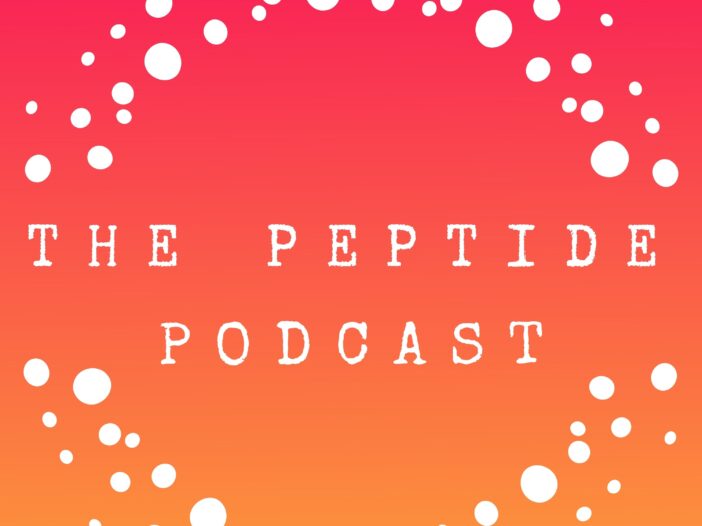
Today, we’re diving into an exciting peptide therapy called tesamorelin. You might have heard of it if you’re interested in anti-aging treatments.
In this episode, we’ll break down exactly what tesamorelin is, how it works in the body, and the potential benefits it can offer. Plus, we’ll talk about the possible side effects and risks associated with the therapy, and how it compares to another popular peptide we discussed last week, sermorelin.
What is Tesamorelin?
Tesamorelin is a synthetic peptide that acts as a growth hormone-releasing hormone (GHRH) analog. In simple terms, it stimulates the body’s natural production of growth hormone (GH) by targeting the pituitary gland, which is responsible for releasing growth hormone.
Unlike direct growth hormone replacement therapy, where you inject synthetic growth hormone into your body, tesamorelin works by prompting your body to produce its own growth hormone naturally. This is often considered a more natural approach to restoring optimal hormone levels.
Originally, tesamorelin was approved by the FDA to treat lipodystrophy (abnormal fat distribution) in HIV patients who were experiencing excess abdominal fat. However, its use has since expanded in the realm of anti-aging and fat loss due to its ability to promote fat metabolism, muscle development, and overall vitality.
How Does Tesamorelin Work?
In essence, tesamorelin taps into your body’s natural ability to produce growth hormone, rather than injecting it directly. This is why it’s often considered a safer, less invasive alternative to traditional growth hormone therapy. It’s typically given once daily via subcutaneous injections (just under the skin). Depending on the health condition being treated, some individuals may need to dose less frequently.
What’s the Difference Between Tesamorelin and Sermorelin?
While both tesamorelin and sermorelin are peptides that stimulate the release of growth hormone, they differ in their structure and the specific ways they interact with the body.
- Tesamorelin is a modified version of GHRH that specifically targets the release of growth hormone from the pituitary gland. It’s particularly effective in reducing abdominal fat (especially visceral fat) and improving body composition, which makes it popular for individuals seeking fat loss and anti-aging benefits.
- Sermorelin, on the other hand, is a shorter form of GHRH and has a more general effect on growth hormone secretion. While it also stimulates the pituitary to release growth hormone, it is often used in younger individuals or those seeking overall growth hormone balance and anti-aging benefits rather than specifically targeting fat loss.
Potential Benefits of Tesamorelin Therapy
- Fat Loss and Body Composition:
One of the most well-known benefits of tesamorelin is its ability to reduce abdominal fat and improve overall body composition. It is especially effective at targeting visceral fat, the fat stored around internal organs. This can be beneficial for those looking to lose stubborn belly fat, which is linked to several health issues like heart disease, diabetes, high blood pressure, and fatty liver disease. - Improved Muscle Mass:
Since growth hormone plays a key role in muscle development, tesamorelin can help increase lean muscle mass and improve muscle tone. It’s especially helpful for older adults or people recovering from injuries who want to retain or regain muscle strength. - Increased Energy Levels:
Higher levels of growth hormone can result in improved energy, vitality, and endurance. Many patients report feeling more energized throughout the day, which can improve quality of life and overall activity levels. - Better Skin and Hair Health:
Tesamorelin’s effects on collagen production can contribute to improved skin tone, elasticity, and texture. It may also benefit hair health, making it a popular option for individuals seeking anti-aging benefits beyond just fat loss and muscle gain. - Improved Metabolism:
Tesamorelin may enhance the body’s metabolism, aiding in better fat burning and more efficient use of nutrients, which can be beneficial for weight management. - Cognitive Function:
Some studies suggest that tesamorelin may have cognitive benefits, including improved memory and mental clarity, likely due to the overall boost in growth hormone levels.
Potential Side Effects and Risks
As with any therapy, tesamorelin comes with potential side effects and risks. While side effects are generally mild and well-tolerated, they can include:
- Injection site reactions: Pain, redness, or swelling at the injection site.
- Headaches: Some people report mild to moderate headaches, especially when first starting the therapy.
- Joint pain or muscle aches: Increased growth hormone levels can sometimes lead to discomfort in muscles or joints.
- Fluid retention: Some individuals may notice mild swelling or bloating, particularly in the hands or feet.
Long-term use of growth hormone-stimulating therapies like tesamorelin may increase the risk of carpal tunnel syndrome, joint issues, or diabetes in predisposed individuals.
Although rare, there is a concern that stimulating growth hormone production could accelerate the growth of existing cancers, so it’s important to have a thorough health evaluation before starting therapy.
As always, consulting with a healthcare provider before starting tesamorelin therapy is essential, especially if you have a history of cancer, pituitary gland disorders, or chronic health conditions.
Thanks for listening to The Peptide Podcast. If you found this episode helpful, be sure to subscribe and leave a review. And as always, have a happy, healthy week.
If you’re ready to dive deeper into the world of nutrition, don’t miss my new ebook, Eat Smart: Powerful Tips for a Healthier You, now available on Amazon! It’s packed with easy-to-understand, science-backed tips to help you optimize your diet, boost metabolism, and reduce inflammation. The best part? If you have Kindle Unlimited, it’s always free! So grab your copy today and start your journey to a healthier, smarter way of eating!
Leave a Reply